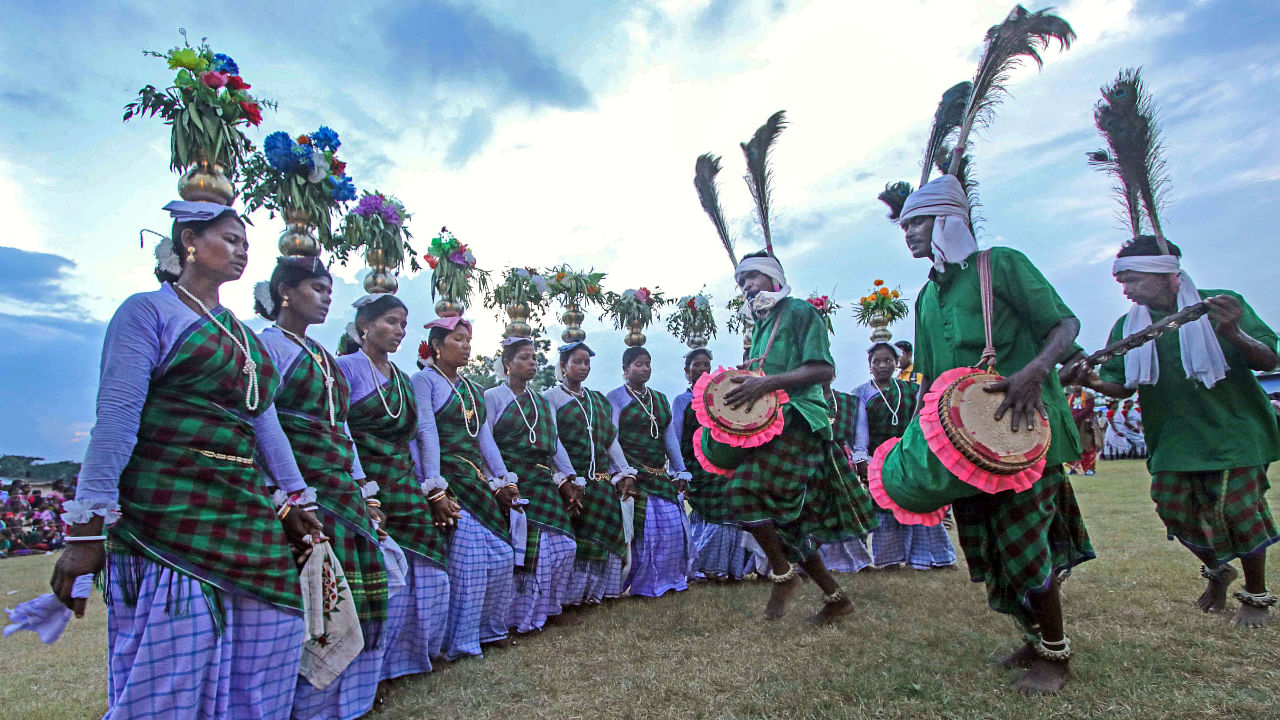
On this occasion, we look at a brief history of the Santhal community.
Origin and migration
While academics are divided on the specifics of the origins of the Santhal, research from the University of Oslo suggests that the nomadic community was originally based in the Champa Kingdom of northern Cambodia before migrating to India and settling in the Chotanagpur Plateau some 3,000 to 4,000 years ago.
Today, the Santhal community is largely concentrated in Odisha, Bihar, Jharkhand and West Bengal. They have a population of over six million in India alone.
President Droupadi's home district, Mayurbhanj in Odisha, is one of the most densely populated Santhal areas in the nation, according to an Outlook India report.
By the 18th century, the Santhals, whose primary occupation was agriculture, had begun settling in the Santhal Paraganas of erstwhile Bihar (modern-day Jharkhand) and eventually spread out to West Bengal, Odisha and the northeastern states.
Uprising against the British
The Santhals would rise up in revolt against the British, a landmark peasant uprising precipitated by the implementation of the Permanent Land Settlement in 1793.
Also Read | My election is proof that the poor in India can dream: Murmu in first address as President of India
The Santhal Hul of 1855-56 preceded the renowned Sepoy Mutiny of 1857 and saw members of the community and lower caste peasants take up arms in a guerilla war against the British Raj.
Led by Sidhu and Kanhu Murmu, the rebellion saw an initial period of success before it was stamped out by the British government following the deaths of the two leaders.
The Santhal society
The Santhals have their own language, Santhali, which has its own script called 'Ol Chiki', created by Pandit Raghunath Murmu. Both are officially recognised and there are postgraduate courses that offer specialisation in Santhali.
Members of the community worship nature and follow their own religion, Sarna. They have no temples or places of worship and pay obeisance at sacred groves called Jaher.
The Santhals have a higher literacy rate in comparison with other tribes in Odisha.
Santhals in the government
There are several Santhal leaders who hold positions in the Indian government. Jharkhand Chief Minister Hemant Soren hails from the community as does Chandra Murmu, current Comptroller and Auditor General of India and the first Lieutenant Governor of the Union Territory of Jammu and Kashmir.
Bishweswar Tudu, Member of Parliament from the Mayurbhanj District and Union Minister of State for Tribal Affairs and Jal Shakti, also hails from the community.